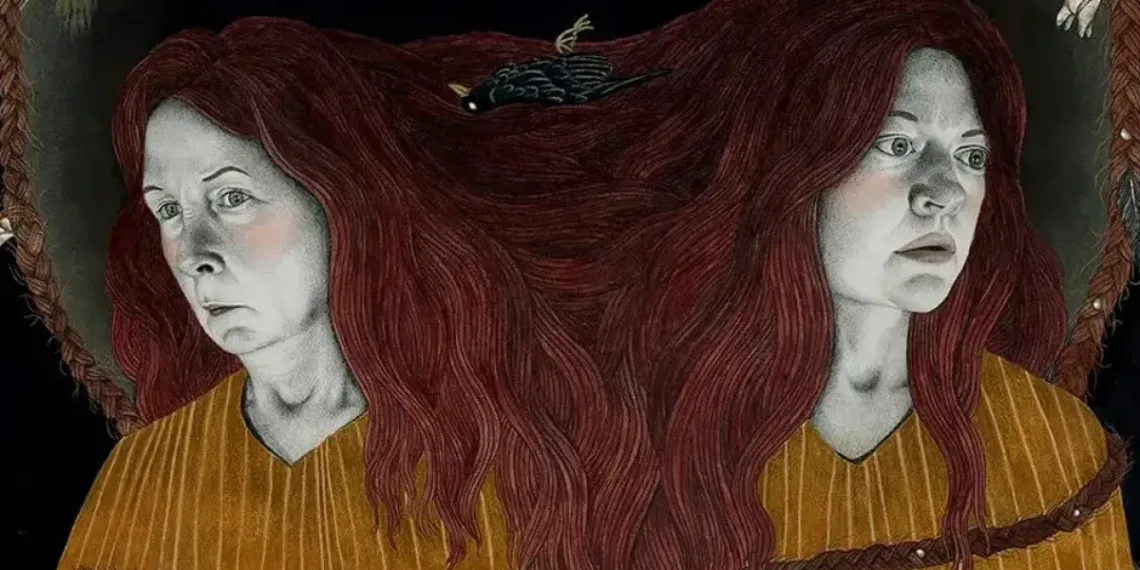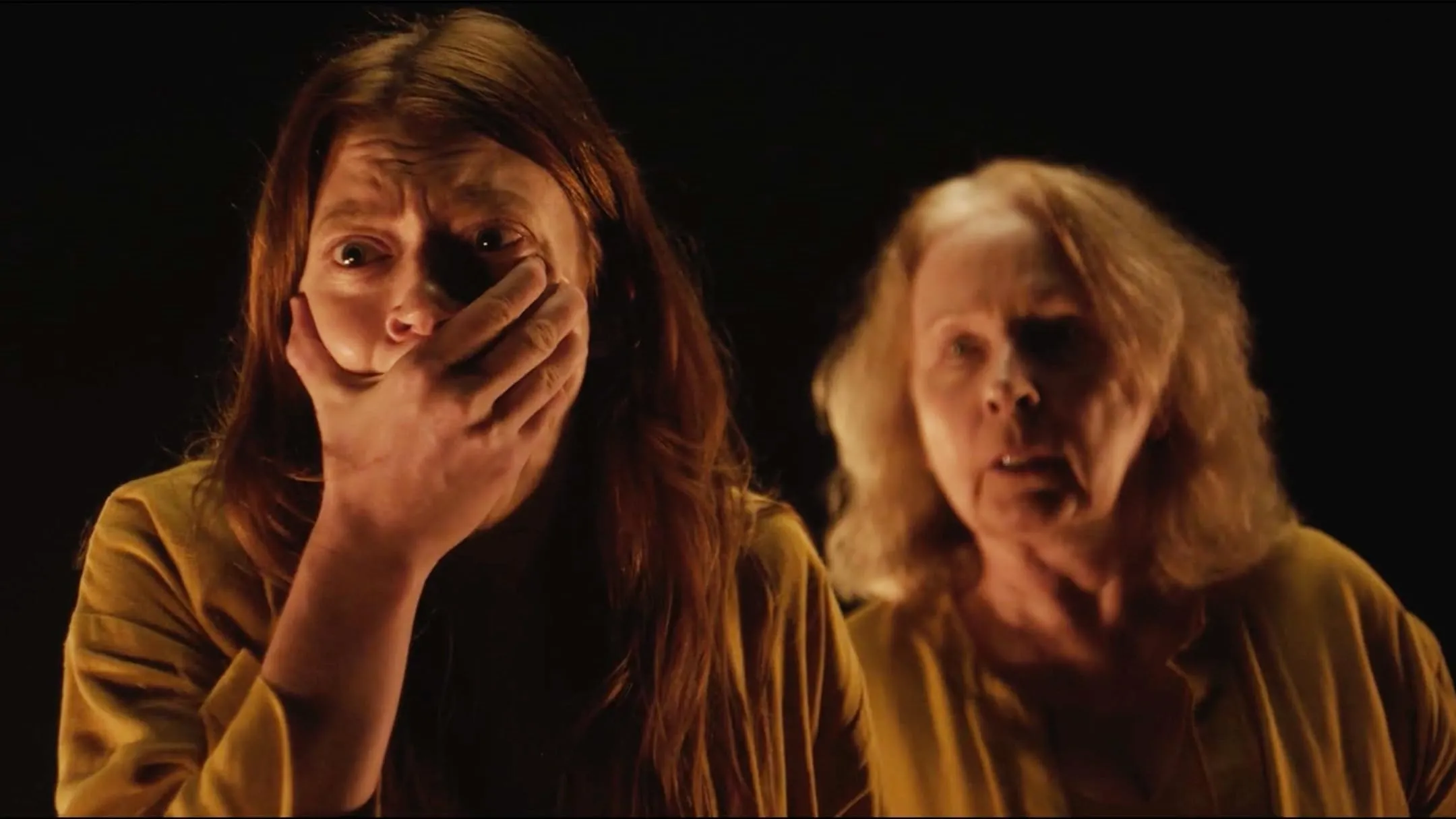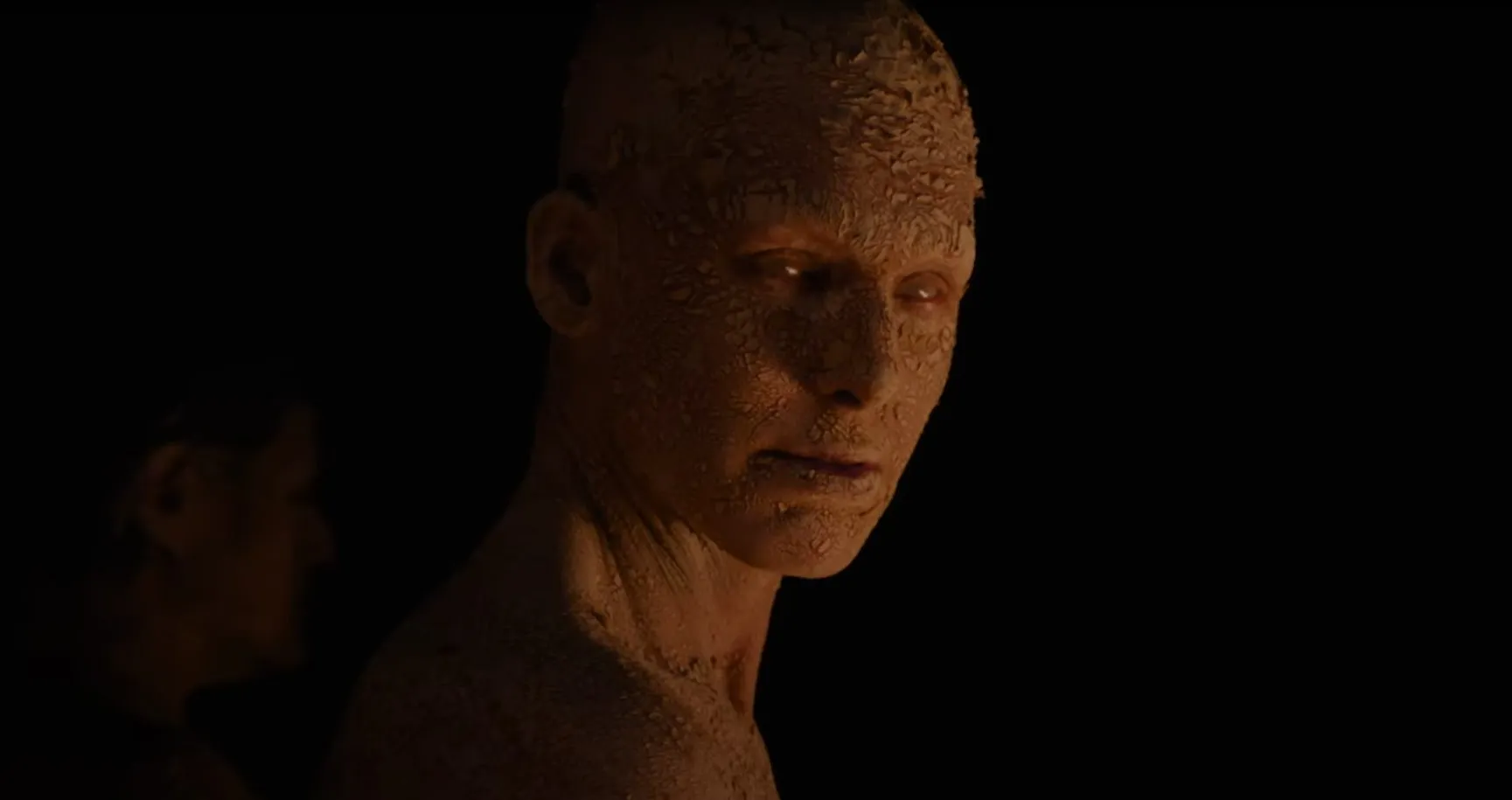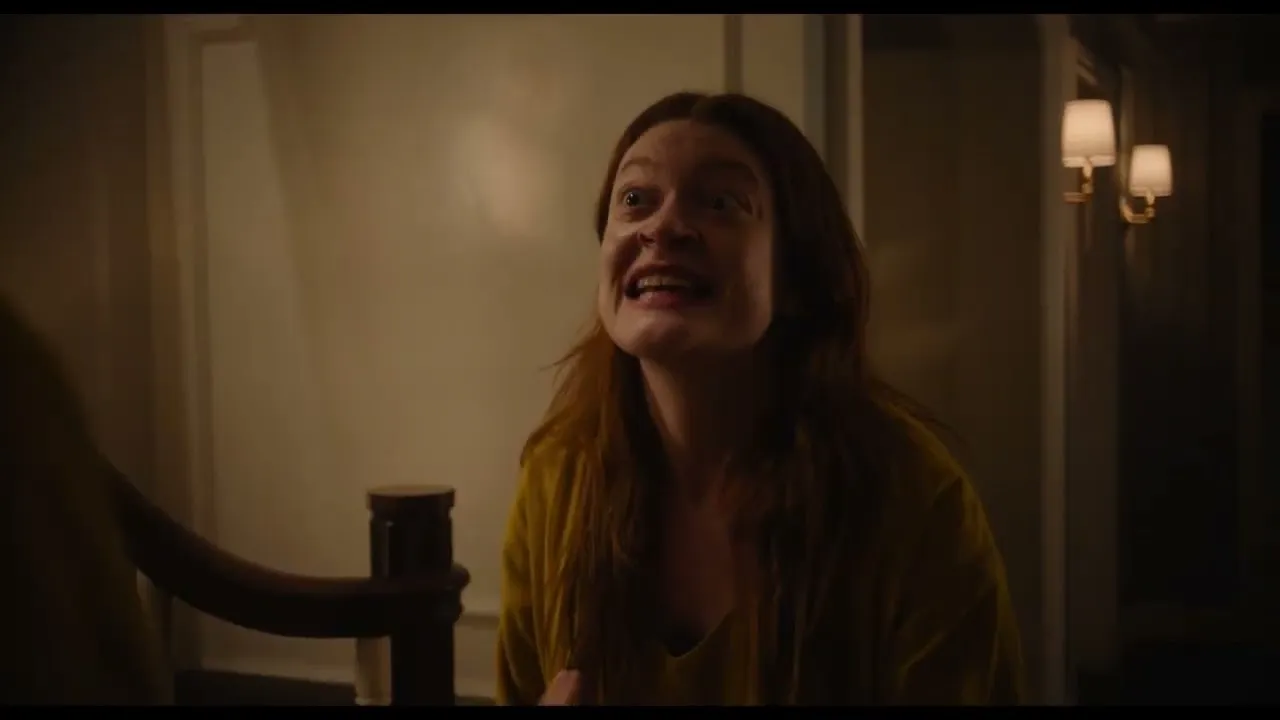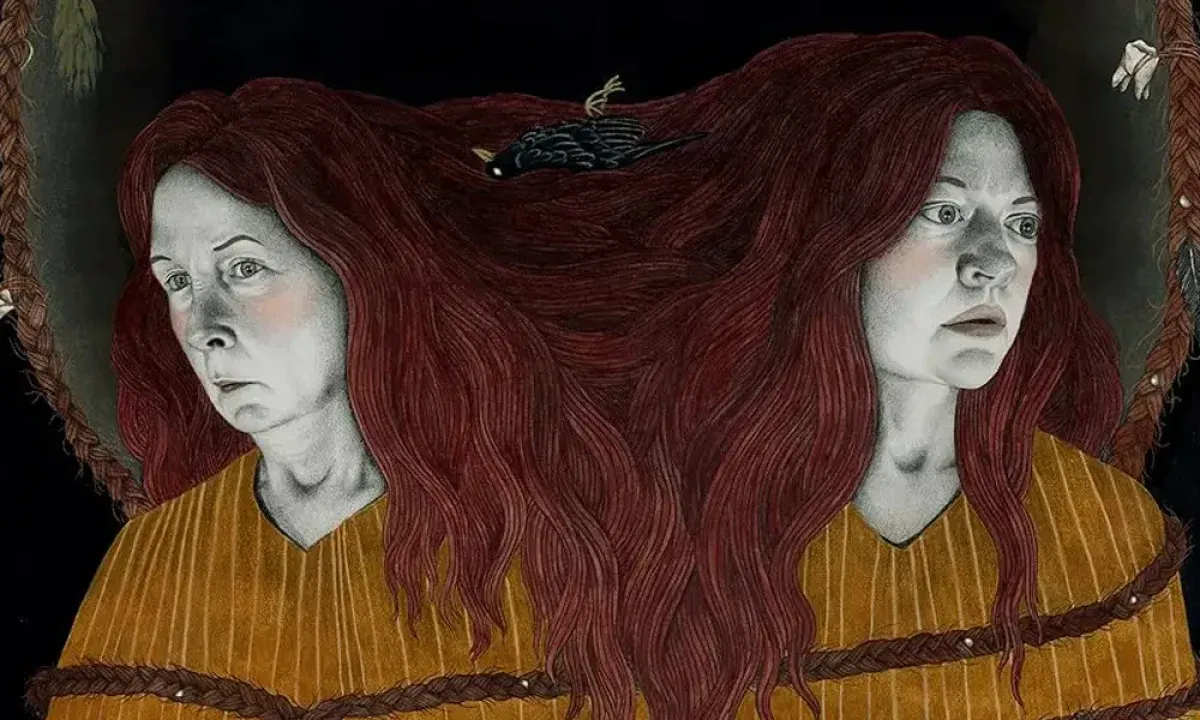When The Surrender kicks off, you’re thrust into a nightmarish prelude—blood‑slicked stone, a clawing creature and skeletal hands bursting free. That fleeting glimpse primes you for a much quieter return: Megan’s weary drive home to assist her mother, Barbara, at the bedside of the family patriarch.
At its heart, this debut from Julia Max is a study in extremes. Megan (Colby Minifie) arrives carrying guilt over distance, while Barbara (Kate Burton) clings to control through spreadsheets of medications and whispered incantations. Their shared loss of Robert, the ailing husband and father, sets up a tug‑of‑war between clinical care and forbidden rites.
Max blends the procedural rhythms of caregiving with an escalating sense of the uncanny. Early scenes hum with the tension of everyday routines—pill dispensers clicking, monitors beeping—only to fracture as dreamcatchers flutter and buried teeth surface under the bed. Then comes the shamanic interloper, a silent force that reshapes the film’s homey rooms into a stage for arcane drama.
This tight setting—every creaking floorboard magnified—becomes a crucible. You feel the walls close in as mundane grief gives way to ritualistic dread. Max stakes her claim, promising that each whispered prayer and drop of blood will carry emotional weight right up to the final, unmoored moments.
Mapping the Ritual’s Blueprint
Julia Max structures The Surrender like a finely tuned game level, guiding you from familiar terrain into uncharted horrors. The story arc kicks off with Megan’s return to care for her ailing father—an inciting incident you feel in every worried glance and late‑night drive. The catalyst arrives when Robert dies and Megan uncovers Barbara’s cryptic preparations: dreamcatchers, hidden teeth and spreadsheets that play like a developer’s debug log of grief.
From there, the rising action tightens its grip. Odd behavior mounts—echoes of The Brood’s domestic strain—until “The Man” appears, turning a mother‑daughter drama into an occult boss fight. The climax unfolds in a ritual sequence that opens a charmed circle like a game’s final dungeon, complete with grotesque visuals and a surreal netherworld. When reality splinters in the final act, you’re left suspended between emotional catharsis and metaphysical surrender.
Max’s temporal design borrows from horror classics and narrative‑driven titles alike. A prologue flash‑forward teases a demonic creature—think of a game tutorial that shows you the ultimate boss first—before rewinding to the grounded family drama. Foreshadowing is woven through visual breadcrumbs: a trail of blood on cavern‑like floors, Barbara’s obsessive charts.
The pacing splits neatly into three acts. Act I moves at a deliberate crawl, letting grief’s weight settle in. Act II shifts into a creeping tension, ritual prep intercut with arguments that deepen character bonds. Act III plunges into high‑velocity carnage, its pace echoing the breakneck rush of a timed level. Throughout, Max balances intimate drama with body‑horror spectacle, ensuring that each visceral beat reinforces the film’s emotional stakes.
Character Loadouts: Emotional Mechanics in The Surrender
Megan functions like a protagonist in a narrative‑driven game whose skill tree evolves under pressure. She starts as the anxious, empathetic daughter—guilt and duty in her toolset—and by the ritual’s midpoint she’s buffeted by terror and doubt. Minifie’s subtle shifts—a quiver in her gaze, a tremor in her hands—feel as precise as well‑timed animations, conveying Megan’s transformation from skeptical caretaker to tormented participant without heavy exposition. Her arc echoes the emotional beats in indie titles like That Dragon, Cancer, where personal stakes drive every decision.
Barbara is the ultimate “control specialist,” laying out her care routine like a player designing the perfect strategy guide. Burton’s icy resolve and clipped delivery channel a character who refuses to surrender authority even in grief. Yet when her composure cracks—an anguished glance at Robert’s empty chair, a tremble as she recites an incantation—you sense vulnerability lurking beneath her stoicism. It’s a performance that balances strategic precision and raw emotion, much like strategic‑horror hybrids where every choice carries weight.
Though Robert has minimal screen time, his presence is the quest marker that summons every other character into motion. Armstrong’s subdued portrayal as the dying father creates a powerful absence: you feel him in the rhythmic beeping of monitors and in Megan’s haunted memories. In game terms, he’s the NPC whose legacy defines the mission objectives and moral dilemmas that follow.
As the cryptic shaman, The Man is a non‑playable character designed to unsettle. Sandilands employs a near‑invisible vocal range and statuesque stillness, making his few words land like critical hits. His role mirrors a mid‑boss encounter—unpredictable, ominous and completely in command of the ritual’s mechanics.
The nurse and yoga instructor are skill‑tree unlockers: one flags Barbara’s morphine rationing, the other introduces the occult pathway. These peripheral figures highlight the mother‑daughter dynamic, much like side quests that deepen your understanding of the main campaign—and leave you questioning which guides are safe to follow next.
Symbols of Surrender: Thematic Mechanics
Much like an emotional quest in a narrative‑driven game, The Surrender structures its themes around the stages of grief. Megan and Barbara’s journey mirrors denial, bargaining and the elusive promise of acceptance. The ritual itself serves as their desperate “bargain” mechanic—an attempt to rewind death that only deepens their trauma. Early household fractures reawaken old scars, akin to unlocking hidden side‑quests in an indie title where every reveal forces you to revisit past choices.
Control versus surrender plays out through Barbara’s obsessive spreadsheet—a user interface for impending loss. In gaming terms, it’s the HUD she can’t disable, an illusion of mastery over an uncontrollable boss fight: death. The film’s title flips that illusion on its head, reminding us that true resolution often comes when players—or characters—relinquish control to forces beyond their coding.
At the core is the mother–daughter dynamic, a two‑player co‑op constantly at odds. Their stubbornness fuels tension, but as rituals progress, their bond subtly reconfigures. Megan’s rational skepticism echoes puzzle logic, while Barbara’s spiritual faith resembles a lore‑driven side narrative—each approach revealing new facets of their relationship.
Occult tokens—the bag of teeth, dreamcatcher—stand in for game collectibles, tangible artifacts that blur science and superstition. The charmed circle and glimpses of a netherworld externalize the psyche, transforming internal fears into spatial puzzles the characters must navigate.
Memory and identity shuffle like a mutable game world: Megan’s hallucinations, conversations with an imagined Robert, challenge the reliability of her personal narrative. As she uncovers hidden truths about her father, we’re left wondering how well any of us “played” our family’s story—and whether knowing every secret might change how we face our final level.
Designing the Ritual: Direction & Technical Craft
Julia Max’s debut feels like an indie studio’s first foray into a genre mash‑up, confidently merging intimate drama with full‑throttle horror. She treats the family home like a pressure chamber, using tight framing and low ceilings to make every corridor feel impossible to escape. When scenes shift to the ritual chamber, the camera pulls back, turning the same rooms into a vast, uncanny arena.
Russell FX’s cinematography plays with color like a codex of emotional states—sickly fluorescent green in caregiving scenes gives way to deep reds and shadows once the bloodletting begins. Handheld shots capture Megan’s panic up close, while static, wide angles during the ceremony emphasize how small the characters are against forces they barely comprehend. The red block‑capital title graphic, splattered with drips, becomes a recurring motif, echoing blood trails and hands clawing free.
Editing balances slow builds—long takes of pills being sorted, silent standoffs—with brutal cuts into sudden gore. Those shifts mirror pacing in a tense game level: breathe, then sprint. Sound design uses near‑inaudible drones and distant murmurs to set nerves on edge, then shatters silence with abrupt crescendos that land like jump‑scares. Practical effects lean on visceral details—spine wounds bursting open, creature silhouettes flickering just beyond view—giving the horror a tangible weight.
Horror Mechanics and Emotional Payoff
The body‑horror sequences in The Surrender land like a game’s brutal mid‑boss reveal. When a hand bursts from Robert’s spinal cavity, it’s as if the developers cranked physics to maximum gore. That visceral shock rivals Cronenberg’s practical effects, making fear feel messy and immediate—no digital filters, just raw physicality that lingers on the skin.
Psychological terror seeps in through the ritual’s unfolding, much like the mind‑bending twists in Layers of Fear. Watching Megan and Barbara submit to each incantation blurs the line between willing participant and victim. The film toys with reality as effectively as a horror‑puzzle game that twists familiar hallways into nightmares.
A standout jump‑scare early in the ritual mirrors a timed ambush in a survival‑horror title. The silence before it tightens nerves, then the sudden roar of goat‑skull drums sends a pulse through your chest—proof that well‑placed shocks still outmatch cheap tricks.
The occult remains tantalizingly vague, echoing the lore systems of cult indie games like Faith. Ritual elements borrow freely—dreamcatchers here, teeth there—but never decode themselves, inviting viewers to piece together the rules as they unfold.
Despite its carnage, The Surrender hooks you on grief. The final act’s warped time loops deliver a sting of sorrow that’s as affecting as the most poignant narrative game ending. How will this blend of emotional weight and horror design shape future genre experiments?
Closing the Circle
Stepping away from The Surrender, the film stakes its claim as an emotional horror that marries visceral shock with heartfelt stakes. Julia Max’s first feature balances gut‑wrenching body‑horror moments—hands writhing free of flesh like a cursed save‑file glitch—with tender scenes of a fractured mother–daughter duo. Colby Minifie and Kate Burton anchor every supernatural escalation with moments of quiet grief, making you care even when the ritual turns crimson. Fans of A Dark Song or Cronenberg’s body‑horror entries will recognize familiar beats, but the film’s emotional core ensures they land with fresh weight.
Russell FX’s lighting and sound design underscore each shift from stillness to terror, turning every gasp and sudden silence into a deliberate pulse‑point. Viewers drawn to horror that probes the cost of undoing loss will find plenty to savor. Whether you seek thoughtful dread or shock‑driven peaks, this debut delivers both. The final frames linger like a haunting echo—an invitation to ponder how far grief can warp reality before yielding entirely to its own ritual forces.
Full Credits
Director: Julia Max
Writer: Julia Max
Producers: Julia Max, Mia Chang, Lovell Holder, Ian McDonald, Robert J. Ulrich
Executive Producers: Susan Gelb, Adam Maffei, Rob Massar
Cast: Colby Minifie, Kate Burton, Neil Sandilands, Vaughn Armstrong, Mia Ellis, Pete Ploszek, Chelsea Alden, Riley Rose Critchlow, Lola Kelly, Alaina Pollack, Judith Foster Thompson, Richard B. Larimore, Hal Perry
Director of Photography: Cailin Yatsko
Editor: Sushila Love
Composer: Alex Winkler
The Review
The Surrender
The Surrender stakes a bold claim as a grief‑driven horror, fusing raw body‑horror set pieces with a deeply felt mother–daughter story. Julia Max’s direction and the leads’ nuanced performances keep the ritual’s shocks grounded in human emotion. Despite a slight drag mid‑ritual, its striking imagery makes the journey unforgettable.
PROS
- Colby Minifie and Kate Burton deliver powerful, nuanced performances
- Tense pacing that builds from intimate drama to visceral horror
- Effective use of practical effects for body‑horror impact
- Strong directorial vision in Julia Max’s debut
- Emotional core grounded in relatable grief
CONS
- Mid‑ritual sequence can feel slightly repetitive
- Occult lore remains underexplained
- Final act’s surrealism may divide viewers








































